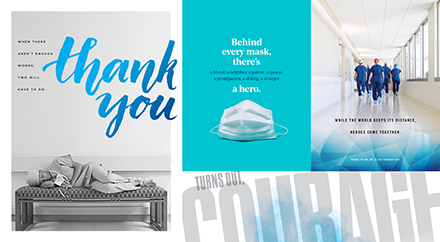Free thank-you ads from AB&C
 We’ve heard a lot about the importance of thanking essential workers during this pandemic. At AB&C, we’d like to make this a little easier for you. We have designed a series of posters/ads that we will customize for you to use as a print ad or as a poster displayed in your hospitals.
We’ve heard a lot about the importance of thanking essential workers during this pandemic. At AB&C, we’d like to make this a little easier for you. We have designed a series of posters/ads that we will customize for you to use as a print ad or as a poster displayed in your hospitals.
We will personalize any of the designs with your logo and color palette—and even resize them—at no cost to you. It’s the least we can do to thank you and your employees for all that they’re doing for your community and our country.
Read full post...











